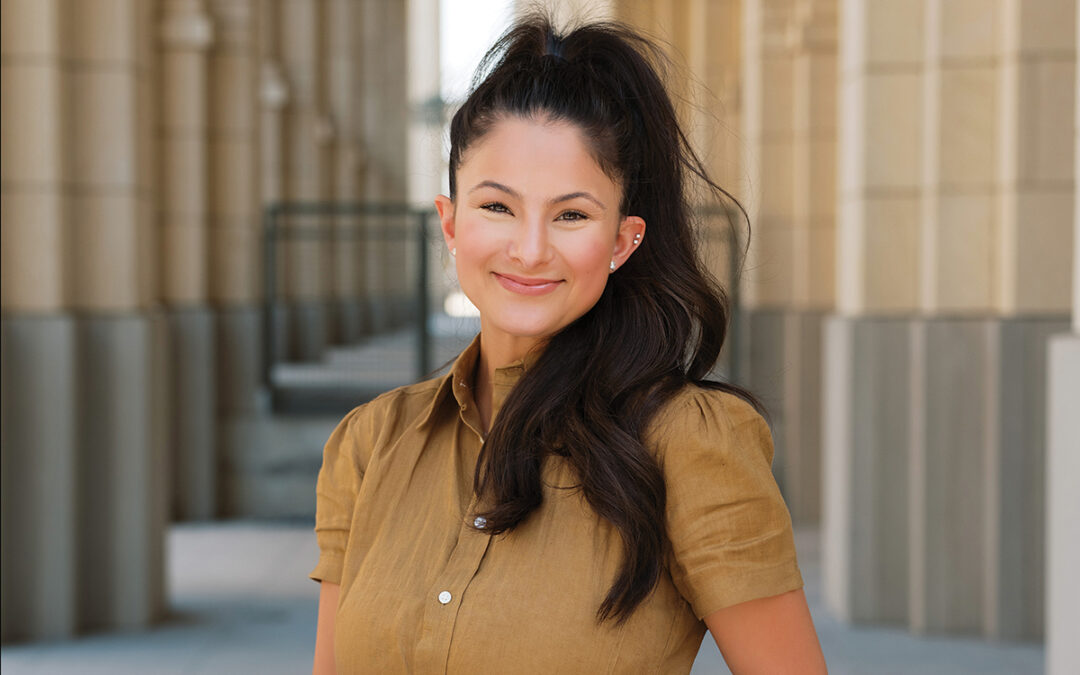It not that Missy Bruce, D.V.M., is one of those fanatics who think their pets are people. She just wants the humans in her life to understand that animals occupy a special place in her heart and sometimes elsewhere. When she and her husband Carlos went on their first date, she remembers, I told him, There is something we better get straight right now. My dog sleeps in my bed. If you don’t like that, we have a problem.
Apparently he learned to live with it, because when they got married in 2000, one of her dogs attended the beach wedding. Dressed in a Hawaiian shirt, the Boston terrier may not have been in the wedding party, but she made it into a lot of the pictures. The Bruces now share their home with two dogs and a cat, as well as a son who will turn 2 in June. In a photograph on her desk at Henderson Pass Animal Hospital, baby Noah smiles placidly, bookended by two dogs taller then he: Tinkerbell and Buster Brown, the family’s not-quite-matched pair of Bostons (the black-and-white breed in the classic children’s-shoe logo).
At a prenatal parenting class, the couple was advised to introduce the dogs to the baby as soon as possible. The first day we brought him home, we let the dogs sniff at him, she says. When they tried to lick his face, we knew it was going to be all right. Noah first word was dog, his mother says, smiling, not Mama or Dada. Ask him what sound a dog makes, and the toddler pants. (Bostons don’t bark much.) Drive him past Mom’s workplace on Thousand Oaks Drive, and he’ll pant and say what’s still one of his favorite words.
Bruce, 32, is medical team leader at Henderson Pass, one of three veterinarians assisted by five full- or part-time veterinary technicians, an office manager and a receptionist all women, except for two male hospital attendants. The busy suburban practice caters to small animals: dogs, cats and pocket pets (gerbils, hamsters, mice and rats). With Dr. Sheryl Proctor and Dr. Cindy Bates, Bruce divides up the many day, evening and weekend hours the hospital needs to stay open to accommodate working clients. They’re also developing individual areas of interest. Proctor, for instance, takes care of most of the rodents. She’s bringing home a hairless rat for her kids. Ug-lee! says Bruce, shaking her head.
No, it’s cute, her colleague protests, swooping in to pick up a mug from a communal counter top. They’re really excited about it. The three vets, dressed more or less alike in green scrubs, share a small office with practiced ease, pulling up files on the computer without sitting down, grabbing files from a shelf over someone else’s head. When Bruce came to the clinic three-and-a-half years ago, she says, I wasn’t sure what it would be like, working with so many women. Would they be too competitive? Too emotional? Too much alike?
Instead, she says, the office culture is more like the opposite stereotype of women at work: lots of cooperation, problem-solving through consensus, consideration of individual needs. We work well as a team, she says. People rally together. They’re interested in team building. Though the public image of what a veterinarian is supposed to look like is probably still the distinguished-looking gray-haired man of high-end dog-food advertisements, the reality is that younger vets are increasingly likely to be women. In Bruce’s graduating class (2000, Texas A&M University’s College of Veterinary Medicine), she estimates, about 75 percent of the students were female.
According to many of her clients, that’s a good thing. A lot of people think that women are more compassionate. That’s not to say that men can’t be compassionate, too, but women are especially more likely to look for a female vet. Women think women are more honest, that we like to talk more, explain more. As a pet owner as well as a vet, she says, lI try to treat every animal as if it were my own. I try not to give false hope. When we work out a treatment plan, we give estimates on the cost.
Just as women may be good for veterinary medicine, the field is a good one for a woman, says Bruce. We spend just as much time and money (on our education) as M.D.s, but our hours aren’t quite as punishing as theirs (during residencies). Because a vet’s office and the animal hospital are usually in the same place, patient care doesn’t require as much travel time, either.Growing up in the small South Texas town of Los Fresnos, Bruce had planned to become a doctor. After graduating from the University of Texas at San Antonio with a bachelor’s degree in biology, she decided to spend some time in laboratory research first, before applying to medical school. Working on aging and immune-system experiments, I learned I didn’t want to do research, she says. The next step is to get a Ph.D., and you end up sitting at a computer, filling in grant applications.
Instead, she went to A&M, earned a second B.S., thistime in Veterinary Science, and applied successfully to the university’s veterinary school. It was through more lab work there that she acquired her first Boston terrier, Tinkerbell. One of the subjects of a hereditary study, the dog was not a particularly promising specimen, with atypical markings for the breed and a timid personality. When the experiment was over, Bruce says, co-workers kept telling me, You should take her home,’ and I kept saying, I don’t think so,’ until finally I thought, maybe I should. Away from the impersonal commotion of the lab, Tinkerbell blossomed into a good companion, civilized enough to be a wedding guest.
Single at the time, Bruce went back home to South Texas after graduation from veterinary school, taking a job in Brownsville with a veterinarian who was a family friend. In her last year of training, Bruce had done an externship there; she felt comfortable returning until her boss had a heart attack and needed to take three months off only a few weeks after Bruce started her new job.
Responsible for covering two clinics one in Brownsville, the other in Port Isabel she underwent a baptism by fire, doing everything from routine examinations to abdominal surgeries and emergency treatment.
I didn’t know how I was going to do it, she says, but I did. Clients, too, sometimes had their doubts. In Port Isabel, she says, We got a lot of winter Texans. There was an elderly couple who came in with this little dog they obviously loved very much. When Bruce introduced herself to them, she says, The woman looked me over and said, How old are you?’ Bruce recognized this is as an opportunity for asserting her professionalism: I told her, Let me do my job and then you can ask me how old I am.’ (The question didn’t come up again.)
More frustrating was a fundamental problem within domestic-animal veterinary medicine: Since few owners carry pet insurance, the cost of treatment may be prohibitive. We had to put way too many dogs to sleep in Brownsville, she says. One case in particular still haunts her: A couple brought in a dog with a severe upset stomach. When Bruce suggested X-rays, they refused, fearing the cost. When the dog didn’t get better, the owners finally agreed to have them done. The problem turned out to be a ball that the dog had swallowed but by the time the trouble was identified, the dog was too sick to recover. I still ask myself, she says, what could I have told those people to get them to have the X-rays done sooner?
Overall, the experience was a positive one. I’m a hands-on learner, Bruce says. During this time, she also reconnected with the man who became her husband, a childhood friend she’d known since age 5. Carlos, an airplane mechanic, had grown up with cordial but distant relationships with animals. They were the family pets, but they weren’t his pets, she says. Now they’re his dogs, too and he believes me when I say they’re smiling!
Recently, the couple had to make the difficult decision to have another dog, a 15-year-old Brittany spaniel, put to sleep. The dog had severe pain from arthritis and had become incontinent. If I weren’t a vet, I don’t know if it would have been any different, she says. I put it off for about six months, telling myself, Wait and see how she’s doing.’ She had loved to hunt; now she couldn’t go outside. What you have to consider what I tell clients is that you have to consider the dog’s quality of life.
In her present practice, Bruce stresses preventive care. So many conditions can be prevented if owners know what to do. We try to be ready here to educate everybody on everything they need to know to keep their pets healthy. That includes heartworm prevention, 12 months a year, with yearly heartworm tests because no medicine is 100-percent effective. Dentistry, too, is important, since regular cleanings can prevent infections; while junior and senior dog-testing programs can reveal potentially serious conditions.
Spaying and neutering also can be part of a wellness program especially for puppies and kittens. Besides cutting down on the number of unwanted stray pets in the community, Bruce says, the procedure has some surprising individual benefits. Studies show that both male and female dogs run a much lower risk of some types of hormone-related cancer if spayed or neutered. For male dogs and cats, there’s a social bonus: They’re less likely to develop territorial marking behavior if neutered at a young age.
Following last year’s change in Texas law, Bexar County now requires rabies vaccine to be given every three years (after two consecutive yearly vaccinations) instead of annually. That doesn’t mean it’s all right toskip the next couple of checkups, though. The real need to see your vet, at least annually, is for a complete physical examination, says Bruce. We have to remember that pets age approximately seven years to our one. Missing even one annual exam would be like you or I not going to a doctor for 14 years or more. Though not mandated by state law, other vaccinations are needed to protect dogs and cats from distemper and dogs from parvovirus – both potentially fatal diseases.
When clients get messages like these, and when patients respond to treatment, Bruce enjoys tremendous job satisfaction. Every time I help get a pet get better, the client is happy, she says. Pets are members of families now. They’re kids’ best friends; they’re babies to those who don’t have children or children to those whose human children have left home. They let you come home to someone who’ll greet you. And they may get mad at us for a second or two, but they don’t hold a grudge. The attraction of people to their pets is simple: Pets are our companions who show us unconditional love. When we return that love, she says, I think pets make people better people.
Because her patients can’t talk, Bruce says, It’s challenging to figure out what’s wrong with an animal. However, that’s part of what keeps her interested in her work. Not only the patients, but the field is always changing. I really do wake up and think, What am I going to learn today?’ she says. Continuing education, keeping up, is always going to be a priority with me. I can never know enough, and I will always want to get better at what I do.
Author: Paula Allen
Photographer: Liz Garza Williams









0 Comments